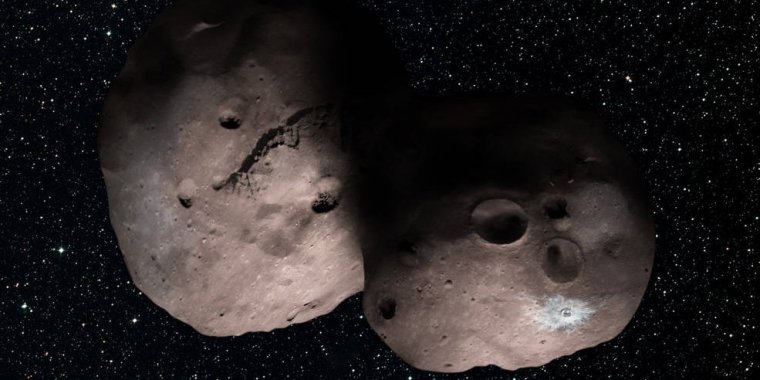| News / Science News |
New Horizons' Next Target Just Got a Lot More Interesting
New Horizons scientists sort through new data gathered on the distant Kuiper Belt object (KBO) 2014 MU69, which the spacecraft will fly past on Jan. 1, 2019. That flyby will be the most distant in the history of space exploration, a billion miles beyond Pluto.

One artist’s concept of Kuiper Belt object 2014 MU69, the next flyby target for NASA’s New Horizons mission. ![]()
The ancient KBO, which is more than four billion miles (6.5 billion kilometers) from Earth, passed in front of a star on July 17, 2017.
A handful of telescopes deployed by the New Horizons team in a remote part of Patagonia, Argentina were in the right place at the right time to catch its fleeting shadow — an event known as an occultation – and were able to capture important data to help mission flyby planners better determine the spacecraft trajectory and understand the size, shape, orbit and environment around MU69.
Based on these new occultation observations, team members say MU69 may not be not a lone spherical object, but suspect it could be an “extreme prolate spheroid” – think of a skinny football – or even a binary pair.
The odd shape has scientists thinking two bodies may be orbiting very close together or even touching – what’s known as a close or contact binary – or perhaps they’re observing a single body with a large chunk taken out of it.
The size of MU69 or its components also can be determined from these data. It appears to be no more than 20 miles (30 kilometers) long, or, if a binary, each about 9-12 miles (15-20 kilometers) in diameter.
The shape of MU69 is truly provocative, and could mean another first for New Horizons going to a binary object in the Kuiper Belt. (NASA)
YOU MAY ALSO LIKE


